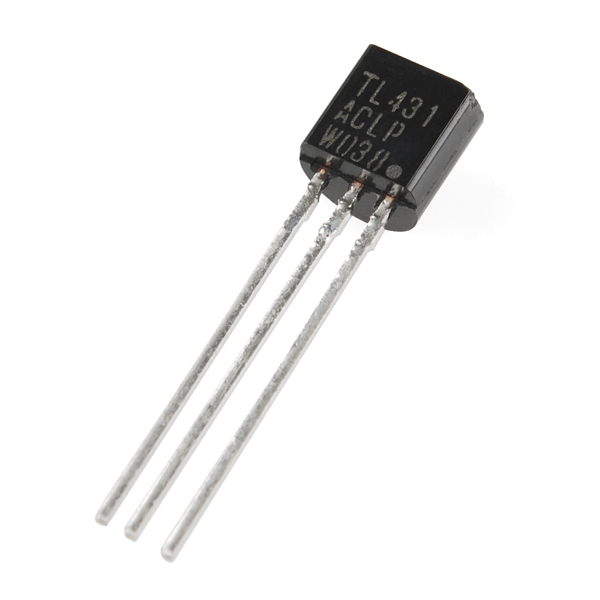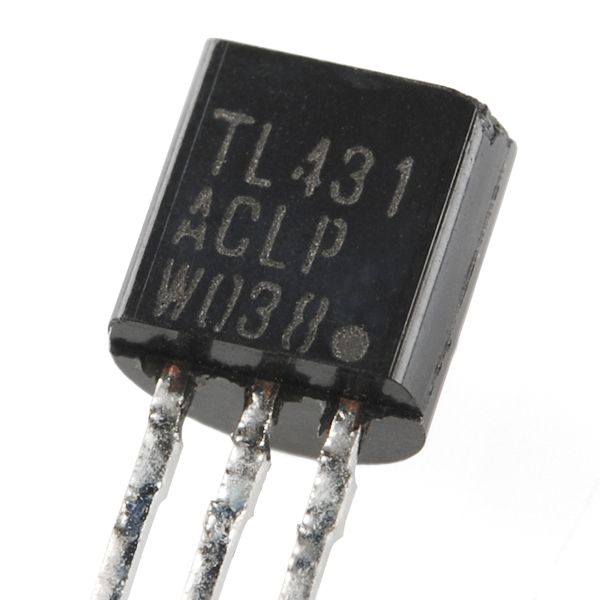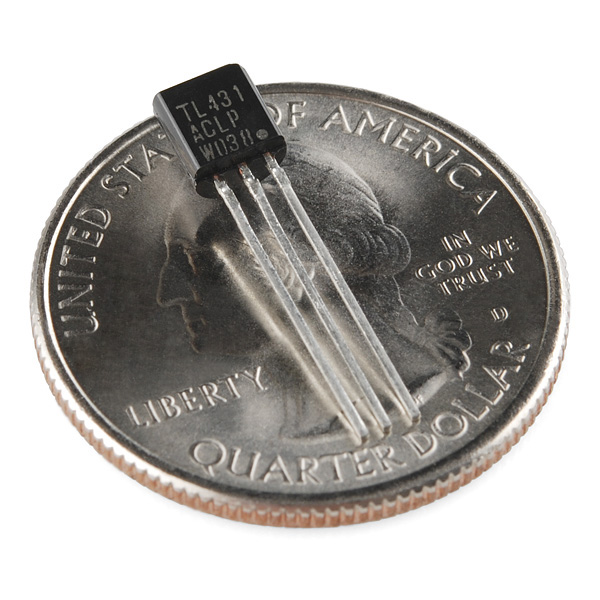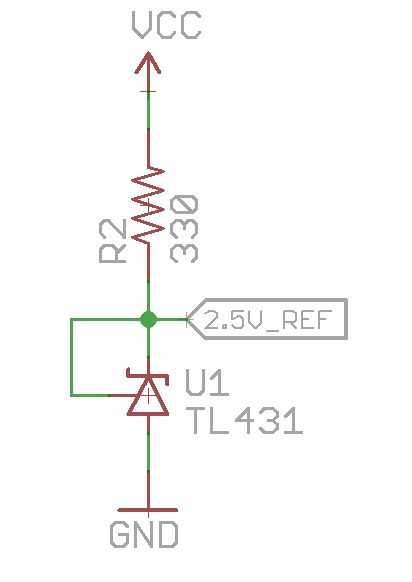TL431 - Voltage Reference
The TL431 is a three−terminal programmable shunt regulator diode. This monolithic IC voltage reference operates as a low temperature coefficient zener which is programmable from Vref to 36V with two external resistors. They exhibit a wide operating current range of 1.0mA to 100mA with a typical dynamic impedance of 0.22 ohms.
The characteristics of these references make them excellent replacements for zener diodes in many applications such as digital voltmeters, power supplies, and op-amp circuitry. The 2.5V reference makes it convenient to obtain a stable reference from 5.0V logic supplies, and since the TL431 operates as a shunt regulator, it can be used as either a positive or negative voltage reference.
- Programmable Output Voltage to 36V
- Voltage Reference Tolerance: ±0.4%, Typ @ 25°C (TL431B)
- Low Dynamic Output Impedance, 0.22 ohms Typical
- Sink Current Capability of 1.0mA to 100mA
- Equivalent Full−Range Temperature Coefficient of 50 ppm/°C Typical
- Temperature Compensated for Operation over Full Rated Operating Temperature Range
- Low Output Noise Voltage
- Pb and Halide−Free
TL431 - Voltage Reference Product Help and Resources
Uh-Oh Battery Level Indicator Hookup Guide
April 9, 2014
Learn how to assemble and use the TL431 in the Uh-Oh Battery Level Indicator Kit.
Discrete Semiconductor Kit Identification Guide
November 19, 2015
Get to know the contents of the SparkFun Discrete Semiconductor Kit.
Resources and Going Further
For an example of using the TL431 with a battery, check out the design of the Uh-Oh Battery Level Indicator Kit for information:
TL431 Used in the Uh-Oh Battery Level Indicator Hookup Guide
Core Skill: Soldering
This skill defines how difficult the soldering is on a particular product. It might be a couple simple solder joints, or require special reflow tools.
Skill Level: Rookie - The number of pins increases, and you will have to determine polarity of components and some of the components might be a bit trickier or close together. You might need solder wick or flux.
See all skill levels
Core Skill: Electrical Prototyping
If it requires power, you need to know how much, what all the pins do, and how to hook it up. You may need to reference datasheets, schematics, and know the ins and outs of electronics.
Skill Level: Rookie - You may be required to know a bit more about the component, such as orientation, or how to hook it up, in addition to power requirements. You will need to understand polarized components.
See all skill levels
Comments
Looking for answers to technical questions?
We welcome your comments and suggestions below. However, if you are looking for solutions to technical questions please see our Technical Assistance page.
Customer Reviews
No reviews yet.







I need this component but i need more information about fet basics that can be here aquired.
You can find a free "tool" on the ti.com website that can calculate the resistor values for you (Excel sheet with a Macro).
I created a quick screenshot of the tool in action which also includes a demo circuit of how to use it.
A calculator in a spreadsheet, really? Is this the 1990s?? Today you make this in Javascript.
It was written in 2005 and still runs today with no modification. Most websites from 2005 are all sorts of broken or obsolete. (Suppose they'd written it in Flash...)
Conclusion: Excel is a more stable environment to write simple tools in.
Eh, Python would be good enough. Could gist a Python3 script if only I knew the equations and test schematic.
Very cool! Thanks!
I need a stable reference voltage for a temperature monitor I am building using the TMP36 analog temp sensor and an Atmega328 self-built Arduino clone. Is something like this a good choice for that application?
Little late but could be useful: I did use this for a TMP36 project based around a PIC16F1828 and didn't have any problems.